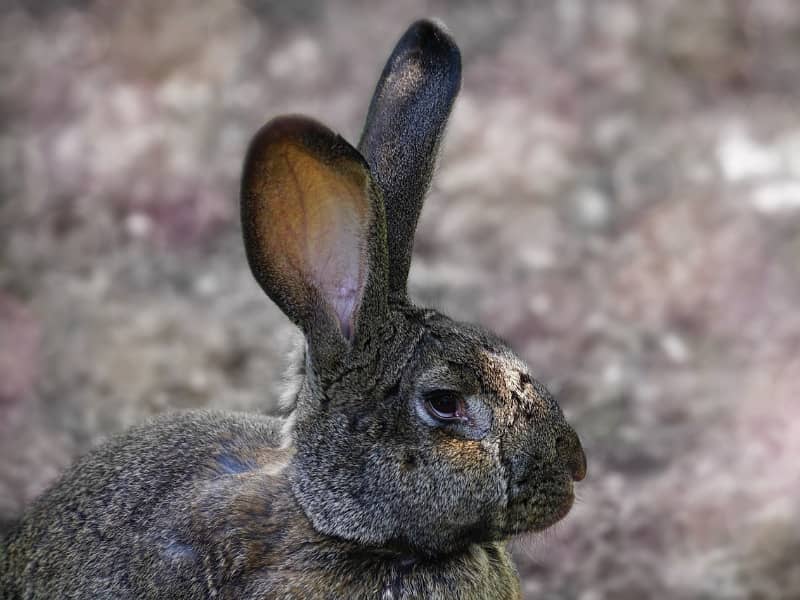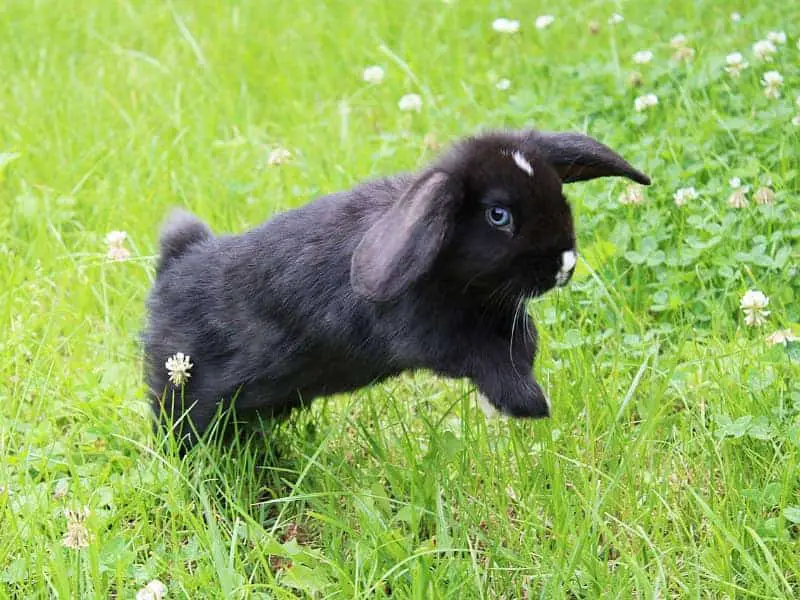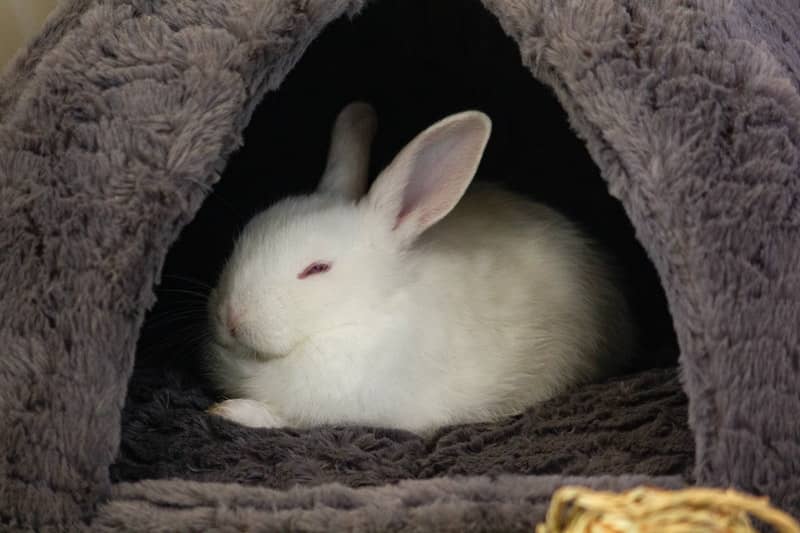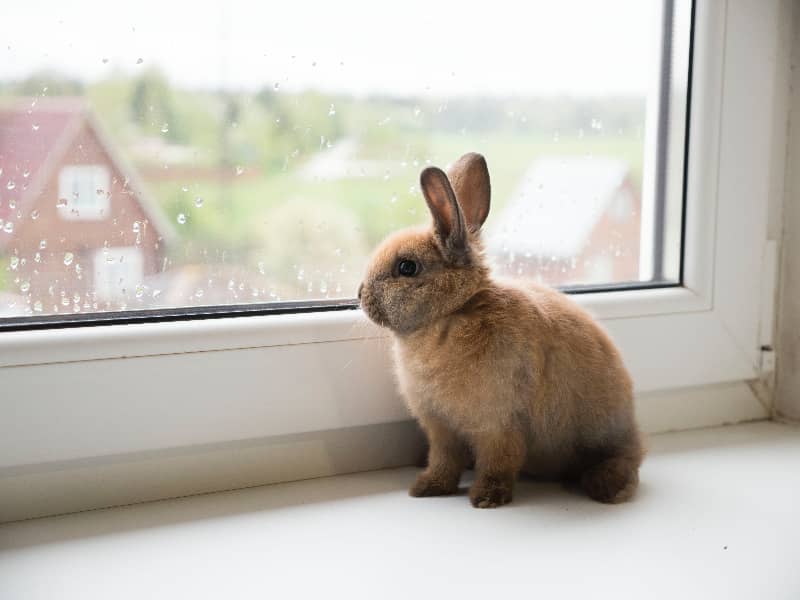
Ear mites rabbit
Ear mites in rabbits are not uncommon. You, as the owner, often do not notice the mites until the infestation has already occurred and is in an advanced stage. Rabbits are especially susceptible to ear mites when they are already weakened by other diseases. Especially then you should pay special attention to your rabbit's ears, we explain how to recognize and treat ear mite infestation.
How do ear mites get to the rabbit?
Ear mites are parasites and are transmitted to your rabbit from other animals. Especially if you have several rabbits, you can assume that all your animals are infested with these parasites. A treatment is then necessary for your entire stock, as this is the only way to be safely mite-free for a certain period of time.
Another possibility for ear mites to settle on your rabbit is places that are contaminated with them. Mites can easily survive on objects for several days and then look for a new host to feed on. In the home, bedding is often responsible for this, but if your rabbit lives outside, many factors can be responsible.
How to tell if your rabbit has ear mites
The typical reaction of a rabbit with ear mites is that it will scratch its ears more and shake its head frequently. Rabbits that normally have erect ears will sometimes droop their ears. In the ear itself, small red dots are visible at the beginning of the infestation. Quickly these dots change into crusts.
Scratching often causes infections, resulting in inflammation of the ear, which secretes a moist, purulent fluid. In severe infestations, the rabbit will hold its head crooked and in extreme cases, movement disorders will occur. Rabbits that have a severe ear mite infestation usually also eat less than normal.
Infestation by ear mites is also called ear mange and can be extremely painful for the rabbit. In advanced infestations, the mites migrate out of the ear and settle in the area of the head, neck and shoulders. Here they continue to multiply and as they continue to colonize, they infest other parts of your pet's body.
If you notice an infestation of ear mites in your rabbit, you should consult a veterinarian. Do this even if you are unsure, because often the mites are located deep in the inner ear and only by examination with an otoscope, a 100% diagnosis can be made. Often samples are taken from the ear to examine the parasites under the microscope.
Ear mites, how to treat?
Your veterinarian will give you a wound irrigation solution after diagnosis. The solution is added to lukewarm water in the prescribed amount. Using a swab, you will carefully clean the rabbit's ears, loosening the secretion, earwax and crusts that have formed in the ear. Different agents are used to kill the ear mites.
These are all assigned to the group of acaricides and are applied only externally. Most often they are applied in the form of an ointment or tincture. Some veterinarians also swear that so-called antiparasitics are injected to accelerate healing. If severe inflammation is present, an antibiotic is also predominantly administered.
This can be given subcutaneously (under the skin) or as drops directly onto the inflamed areas. In case of severe infestation and inflammation, possibly at the same time. Your rabbit can also be given a painkiller by the vet for the first few days, so it recovers better and is more relaxed.
What to consider after the diagnosis of ear mites
If you have several rabbits, then the other animals must be treated. Even if they do not show any symptoms yet. The reason for this is that the mites move from animal to animal as soon as there is closer contact. It is also important to clean the rabbit enclosure completely, if possible.
The first step is to change the bedding completely, furthermore, after the disease is detected, the intervals for changing the bedding should be shortened. This should be maintained until your rabbits are all symptom free. Things that are movable in the rabbit enclosure and can be boiled out should be boiled out. Possibly remove branches completely and replace with new ones.
The treatment will take time, you need to clean the ears regularly with the solution from the vet. Often also apply a wound ointment to promote wound healing. If you follow all these points carefully, your rabbit will soon regain its old freshness and be as cheerful as before.
Prevention of ear mites in rabbits
There is never a 100 percent safety from the ear mites. What you can do, however, is to ensure good hygiene and species-appropriate husbandry. Therefore, clean regularly and every few months you can also boil the objects from the enclosure. It is also important that when new rabbits come, they are examined by a veterinarian. This way, diseases are detected in time and the animals do not infect the others.
Author

-
Garden animal - A life with nature
Welcome to my animal blog! My name is Dirk and I am happy to take you on my journey through the fascinating world of animals and gardening.
Born 54 years ago, I have had an insatiable curiosity for the animal world around me since childhood. Although I have moved professionally in other industries, my true passion has always been animals and nature. It is remarkable how a small garden has become such an important part of my life.
Many of my fondest memories are associated with the animals that share our home. Whether it's the curious squirrels that scurry across the trees in the morning, the colorful variety of birds that visit our feeders, or the busy bees and butterflies that pollinate our flowers, every moment with them is invaluable to me.
This blog is my contribution to share my experiences, discoveries and insights with like-minded people. Here I will share stories of unforgettable encounters with animals, give tips on gardening and creating wildlife-friendly habitats, and take you on my journeys through nature.
Thank you so much for being here!
Cordial,
Dirk aka garden animal
Last posts
- 27. February 2024PetsVeganes Hundefutter – Grün und Gesund?
- 18. January 2024ChickensOregano für Hühner
- November 27, 2023HamsterDiurnal hamsters
- November 24, 2023HamsterHamster hammock






